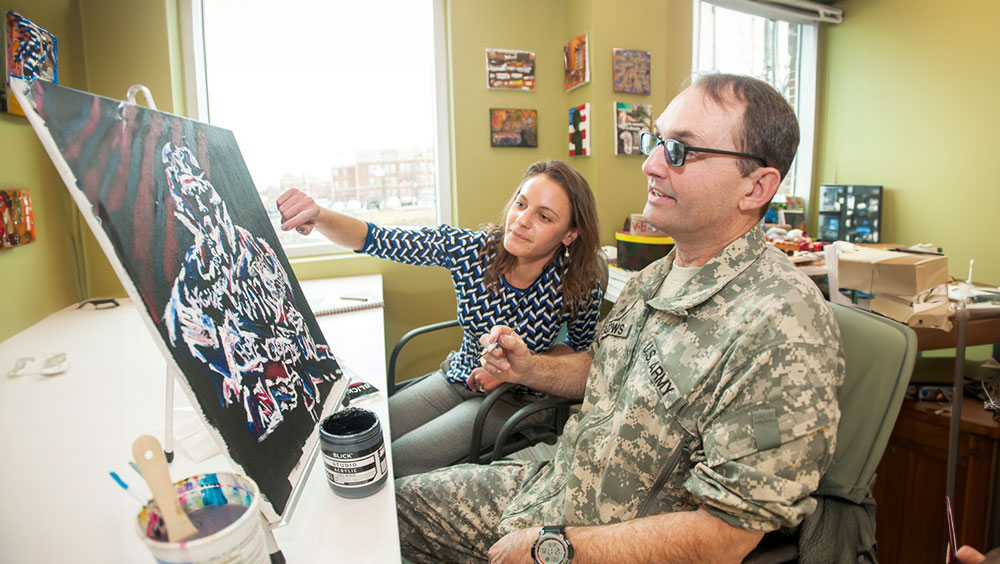Explore the transformative power of art therapy, a unique and creative avenue for healing that offers solace to individuals grappling with PTSD. By harnessing the power of artistic expression, this therapeutic approach enables individuals to navigate their emotional landscapes, facilitating relief and healing. Through creativity and emotional expression, art therapy opens doors to a world of self-discovery and resilience, providing a gentle yet profound means of addressing trauma and fostering emotional well-being.
Understanding PTSD Art Therapy
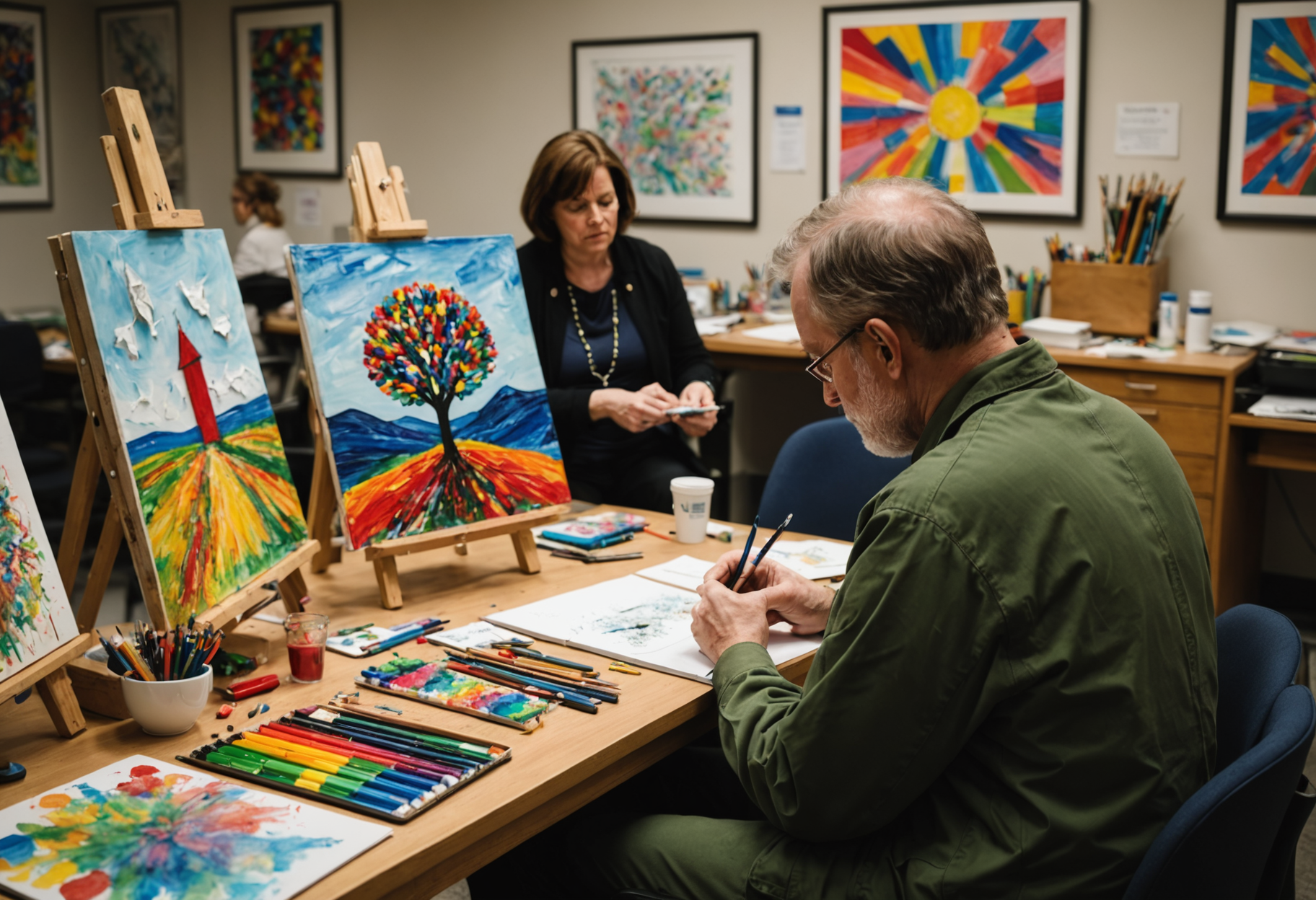
Art therapy has emerged as a promising treatment option for individuals dealing with Post-Traumatic Stress Disorder (PTSD). This innovative approach utilizes the creative process to help patients express emotions, reduce anxiety, and gain insight into their trauma. By engaging in visual art-making, individuals can explore their inner experiences in a non-verbal and symbolic way, which may be less intimidating than traditional talk therapy. The act of creating art can facilitate relaxation and help individuals find a sense of control in their lives..
The Power Of Soothing Arts Healing Therapies
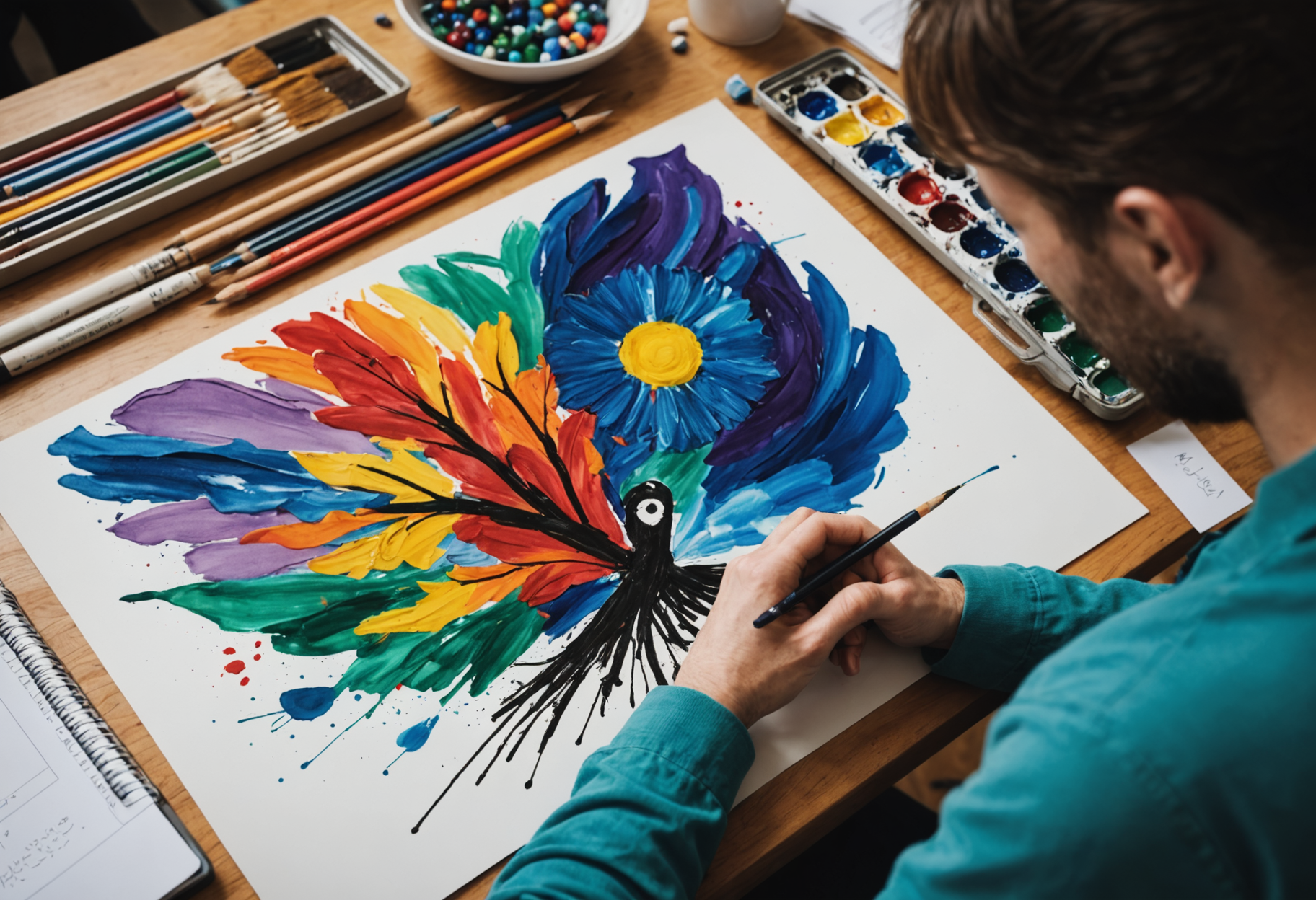
The soothing arts healing therapies involved in art therapy can greatly benefit those with PTSD, providing a safe and structured environment to work through trauma. The creation of visual art allows for self-expression that bypasses linguistic limitations, giving voice to experiences that may be difficult to verbalize. These therapies can include drawing, painting, sculpture, and other art forms, all aiming to soothe the mind and promote healing. The very act of engaging with art materials encourages relaxation and mindfulness, two essential components in the healing process..
Defining Therapy Goals For PTSD

Therapy goals for PTSD in art therapy are tailored to the unique needs of each individual. For some, the goal may be to better understand and manage symptoms of anxiety and depression, while for others, it might be to process traumatic events more thoroughly. Key therapy goals include enhancing emotional regulation, increasing self-awareness, and fostering personal growth. By setting personalized goals, art therapists can guide clients through their creative journey, helping them achieve a sense of empowerment and mastery over their emotions..
PTSD Acute VS Chronic: A Comparative Approach

One can observe differences between PTSD acute vs chronic in the context of art therapy. Acute PTSD refers to symptoms occurring immediately following a trauma, which may last up to three months, whereas chronic PTSD involves symptoms persisting indefinitely beyond this period. Art therapy can be effective for both acute and chronic cases of PTSD, though the therapeutic approach may differ. In acute cases, art therapy might focus on immediate stress relief and safety, while in chronic PTSD, long-term issues such as identity and coping mechanisms might take precedence..
Research Supporting Art Therapy For PTSD
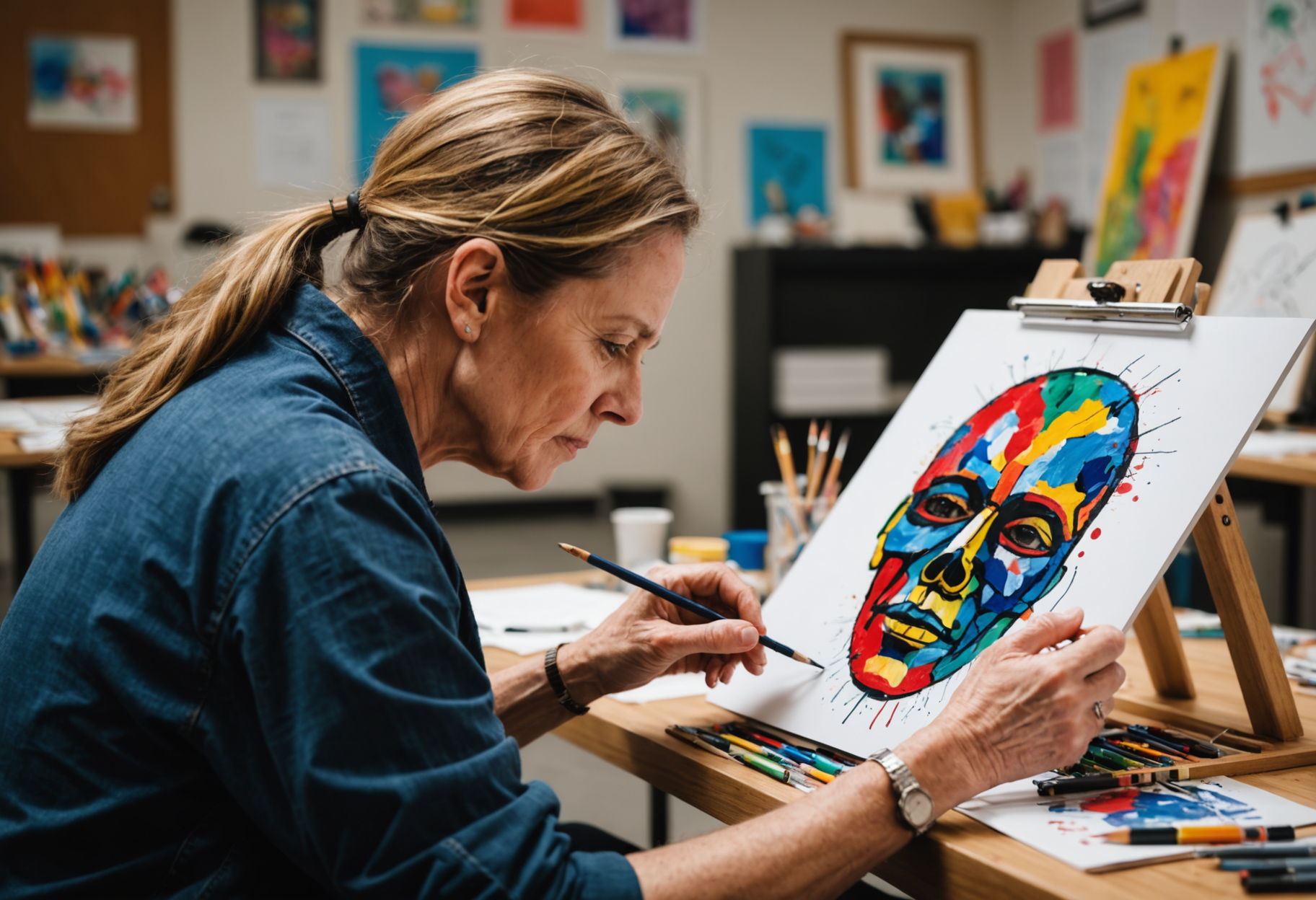
Numerous studies have reinforced the efficacy of art therapy in treating PTSD. Patients often report significant improvements in emotional and psychological well-being, demonstrating art therapy's ability to alleviate trauma-related symptoms. This non-traditional therapy provides a different form of catharsis and self-exploration. By externalizing their trauma, patients can recontextualize traumatic events and begin reconstructing their narrative toward healing. The tactile nature of art supplies can also serve as grounding tools, anchoring individuals to the present moment..
Complementary Role Of Art Therapy In PTSD Treatment

Integrating art therapy into traditional treatment plans for PTSD can significantly enhance outcomes. It is known to complement other therapeutic modalities such as cognitive-behavioral therapy and medication. Combining these approaches caters to different aspects of a person's recovery, highlighting the benefits of a holistic treatment method. Art therapists are trained to collaborate with mental health practitioners, ensuring that individuals receive comprehensive care addressing both psychological and emotional needs..
Challenges In Implementing Art Therapy

While the benefits of art therapy are notable, it is important to acknowledge the challenges as well. Not all individuals may feel comfortable or inclined towards artistic expression, and initial resistance can hinder engagement. Additionally, traumatic experiences can sometimes resurface during the creative process, necessitating skillful handling by therapists. Art therapists must remain sensitive to each individual's pace and comfort levels, enabling a supportive and trauma-informed approach..
The Role Of the Art Therapist
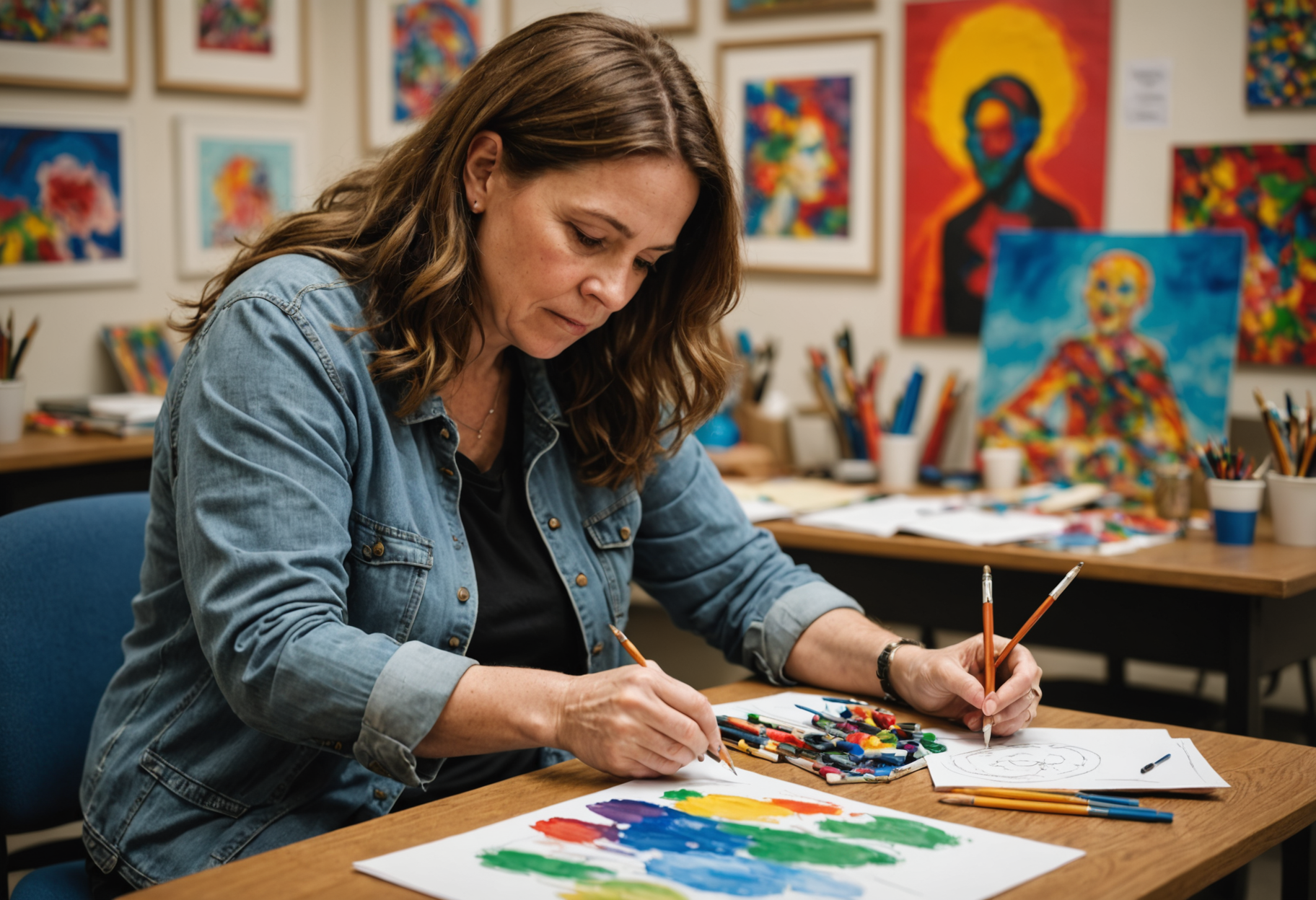
The role of the art therapist is crucial in facilitating healing for individuals with PTSD. These professionals are trained to provide a supportive environment that encourages exploration and expression. They guide clients through their artistic processes, helping to identify and work through intense emotions safely. By fostering a secure and trusting therapeutic relationship, art therapists help individuals tap into their creativity and resiliency, key factors in the recovery process..
In conclusion, art therapy stands as a valuable therapeutic approach for individuals with PTSD, offering a creative means to process trauma and foster emotional healing. By integrating art therapy into their treatment plans, individuals can embark on a journey of self-discovery and resilience, ultimately leading to improved mental health outcomes. Through understanding the nuances of PTSD acute vs chronic and setting tailored therapy goals, art therapy provides a unique and effective modality for healing. Despite certain challenges, its benefits in promoting recovery and well-being make it a commendable option for many.

